And Morion, and the Cabinet

1. Morion is the most famous helmet of the Renaissance and Modern times. No film about that time is complete without soldiers with such helmets on their heads. Frame from the film "Iron Mask" (1962)
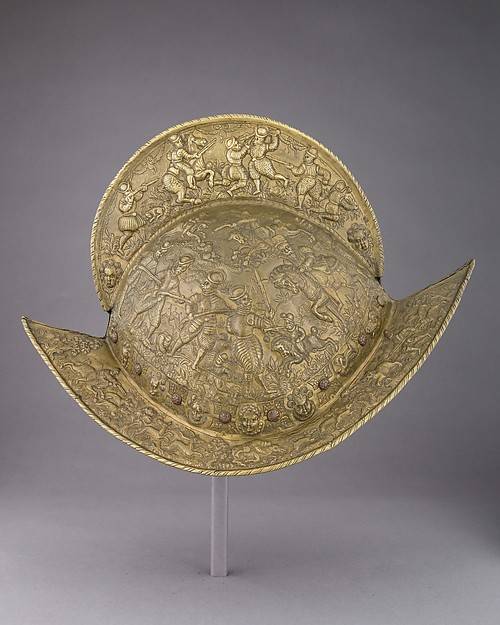
2. Morion end of the XVI century. depicting battle scenes of spearmen, arquebusiers and horsemen. Flanders. Copper, leather. Weight 1326 (Metropolitan Museum of Art, New York)
The top of the development of knightly armor, as is known, was the “white armor”, which had an armor helmet, arranged so that its metal parts smoothly flowed around the head, which, however, never touched its metal anywhere. Here are just the development of firearms weapons He demanded to remove the visor from the helmet, since it was impossible to charge it in the helmet with the visor (as well as to shoot it!).
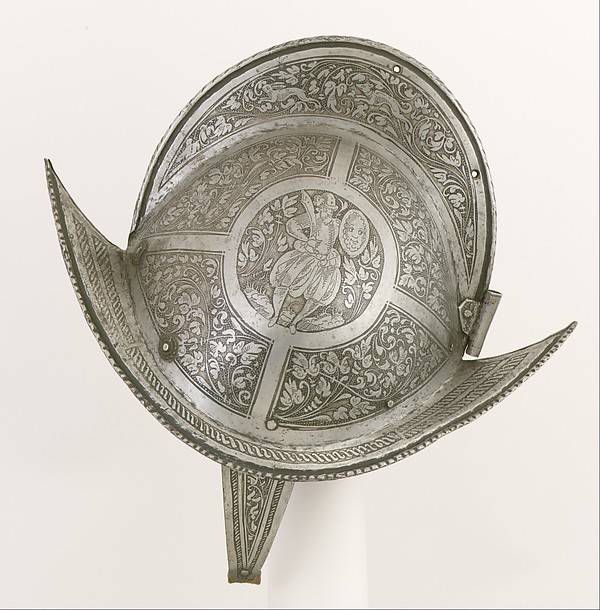
3. Morion, ca. 1600, Germany. Weight 1224, decorated with engraving. (Metropolitan Museum, New York)
This is how a bourgeonot or a burgonet, a helmet, in everything similar to arm, appeared, but with a visor in the form of a grille, or even just three rods. Such helmets, called “sweat” (“pot”) or “pot with lobster tail”, were actively used during the civil war in England and the Thirty Years War on the continent. Experts mark their oriental, that is, Oriental origin. From 1590, all oriental helmets of this type appeared under the name "shishak", and in Europe they remained until the XVII century.
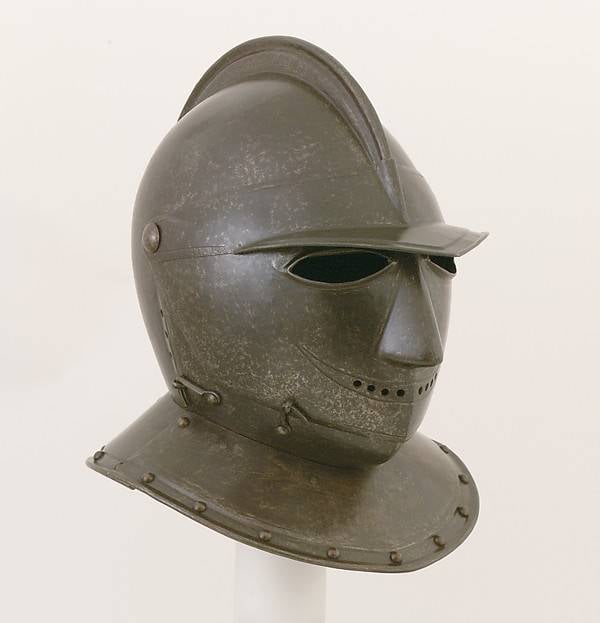
4. Fully enclosed Savoyard burginot helmet approx. 1600 – 1620 Italy. Steel, leather. Weight 4562 kg. (Metropolitan Museum, New York)
But if it was a good helmet for the rider, then the infantry needed something simpler. And, of course, cheaper in cost, but just as effective.
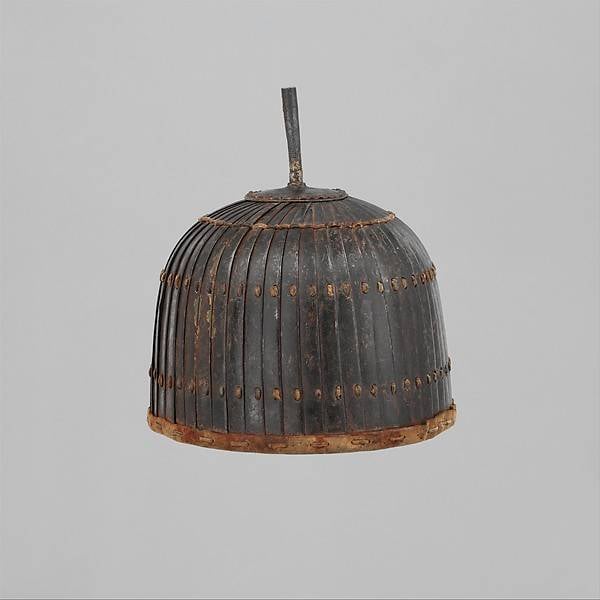
5. In the East, for a long time, preferred helmets from the plates. For example, a Mongolian or Tibetan lamellar helmet of the XV-XVII centuries. Iron, leather. Weight 949.7 (Metropolitan Museum, New York)
This helmet has become a morion. Whether this name originated from the Spanish word Morro (meaning “cranial dome”, or “round object”) or basically had the word More (“moor”), is still unclear. It was also called the Moorish helmet, but be that as it may, it was Morion who supplanted all other types of helmets that infantrymen used in the 16th century. He appeared in France around the year 1510, was mentioned by royal ordinances of both Henry II and Charles IX, that is, between the years 1547 and 1574.
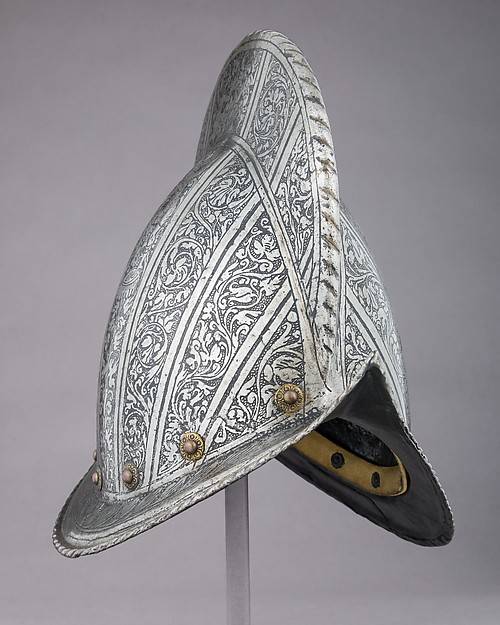
6. Morion 1575 of the year. Italy. Steel, copper, leather. Weight 1601
The first Morions were distinguished by a low dome, which had a hemispherical shape and had not a very high ridge on it. It should be noted that the ridges — initially absent from the arm — gradually began to appear. Of course, their presence made the helmet stronger and increased its protective properties. But it is not possible to typologize Morion according to the shape of its dome, as well as to gradually increase its volume. The only thing that was able to reveal that at the crest of the morion can be traced a clear tendency to its increase. True, at the end of the XVI century. A lot of Morions were made, having both a low dome and a small crest. But the general trend is still the same - the comb on the morion over time became more and more!
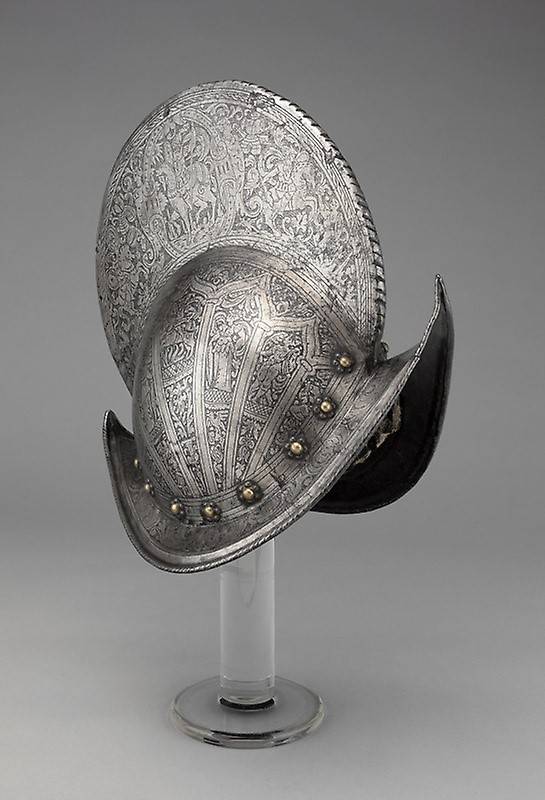
7. Engraved Morion well, just with a very large comb. Northern Italy, presumably Brescia. OK. 1580 - 1590 Steel, bronze, leather. Weight 1600 (Chicago Institute of Art)
In European museums, Morion has a lot of them, and their quality manufacturing suggests that they were very popular among European foot soldiers. The process of spreading the morion was very fast and ubiquitous. Its main advantage was in the open face. At the same time, two visors, in front and behind, did not give the opportunity to deliver a slashing blow from above to the holder of this helmet. In addition, the comb gave him such strength that it could not be cut with a transverse blow.
Even the most senior officers, including colonels, and even the generals themselves, used Morion. At the same time they put it on in the battle against the infantry. These helmets were often gilded, decorated with carvings and with a lush feather sultan. Morion could usually protect from an arquebus bullet, and his average weight could be about two kilograms.
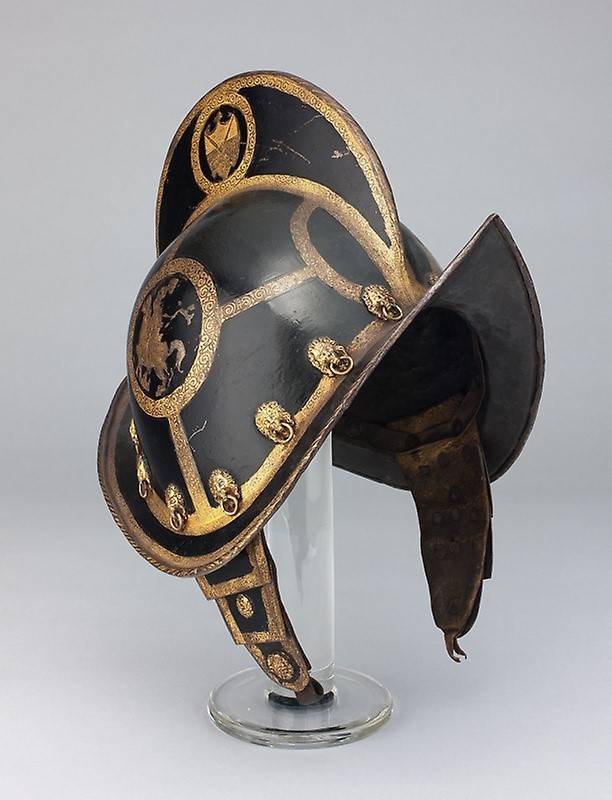
8. Morion of the Duke of Saxon Christian I's guardsmen, ca. 1580. The work of the master Hans Mikel (Germany, 1539 -1599), Nuremberg. (Chicago Institute of the Arts)
Morion wore not only soldiers. They were worn, for example, by the papal guard, as well as officers - lieutenants and captains who commanded pikemen. And we have reached a truly luxurious specimens, which can not but arouse admiration for the subtlety of decoration and the variety of techniques with which they were decorated. And here we can see one amusing phenomenon, namely, the convergence of the appearance of officers and soldiers, by which a great moral and psychological unity was achieved. After all, before this, the armor of a knight and an ordinary infantryman differed as heaven and earth. But the combat technique has changed. Now both the nobleman and the peasant soldier used the same weapon and wore the same armor. It is clear that the nobles immediately tried to decorate their armor with chasing, engraving, etching, and chemical peeling. But ... the form of the same Morion did not change! And by the way, this process was not only in Europe. In Japan, helmets of the nobles of the kawari-kabuto would not have come to ordinary ashigaru to wear. But the Dzingas muskets and helmets came into service to the ashigar. So what? Not only did the samurai themselves initially not disdain to shoot from them, but then they, up to and including the shogun, also began to wear helmets of ordinary infantrymen, although in the palace of the shogun, of course, it was customary to wear old parade helmets.
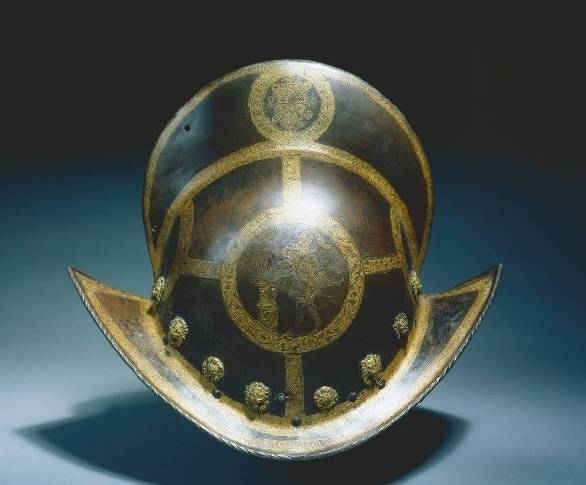
9. The same helmet, side view. But already from the Cleveland Museum of Art.
But the greatest miracle of that time should be considered the unsurpassed skill of blacksmith gunsmiths who knew how to forge these “headdresses” from one piece of metal, including even a comb. Such morions are known, and they are most strikingly distinguished from coarse products made from several metal parts, connected by rivets and in addition also coated with black paint. For lovers of "conspiracy theories" such Morion is a godsend. “How was it done at that time? Even now it is impossible to repeat! ”Documents of those years for their production, naturally, are fake, but they were all made at the latest in the middle of the last century and placed in museums to increase their attendance ... And the arm, and the cabinets ... everything, everything is a fake of the past. Around solid deception and the conspiracy of historians! Speaking of cabinets ...
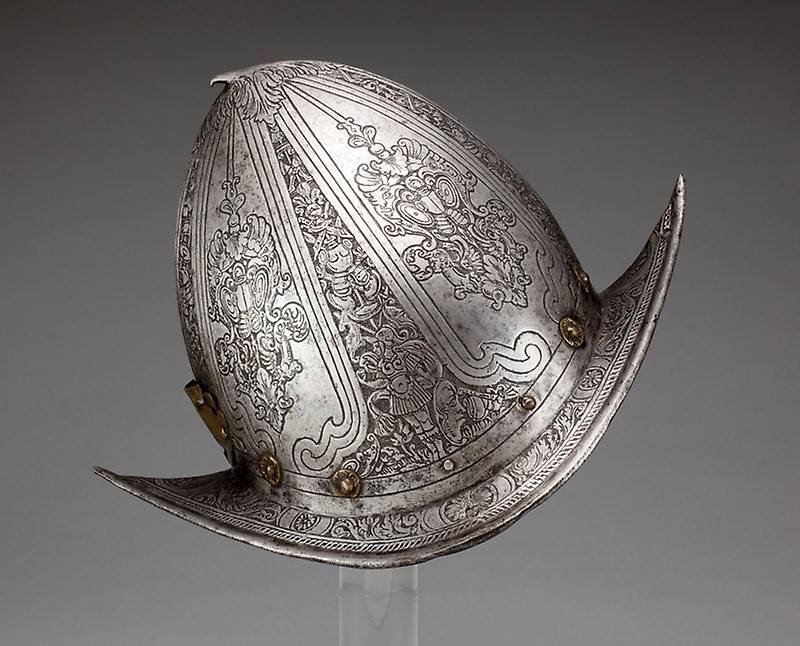
10. Morion cabinets 1580 Northern Italy. (Cleveland Museum of Art)
Although Morion was in all respects a helmet comfortable, and his comb gave the head good protection, technologically it was not the easiest product. And metal-consuming to the same ...
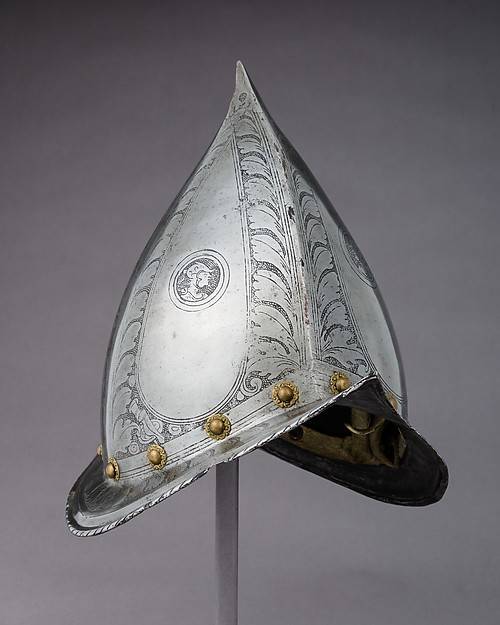
11. Morion-cabasse XVI. Italy, Steel, bronze, leather. Weight 1410 (Metropolitan Museum, New York)
Therefore, at the same time as the classic-looking morion, a hybrid appeared - the morion-cabaret, which was often also called the Spanish morion, from which it was distinguished by the fact that this helmet had no comb. The protective function of this element was compensated for by the high height of the dome and the presence of lancet outlines against which the cold weapon was powerless.
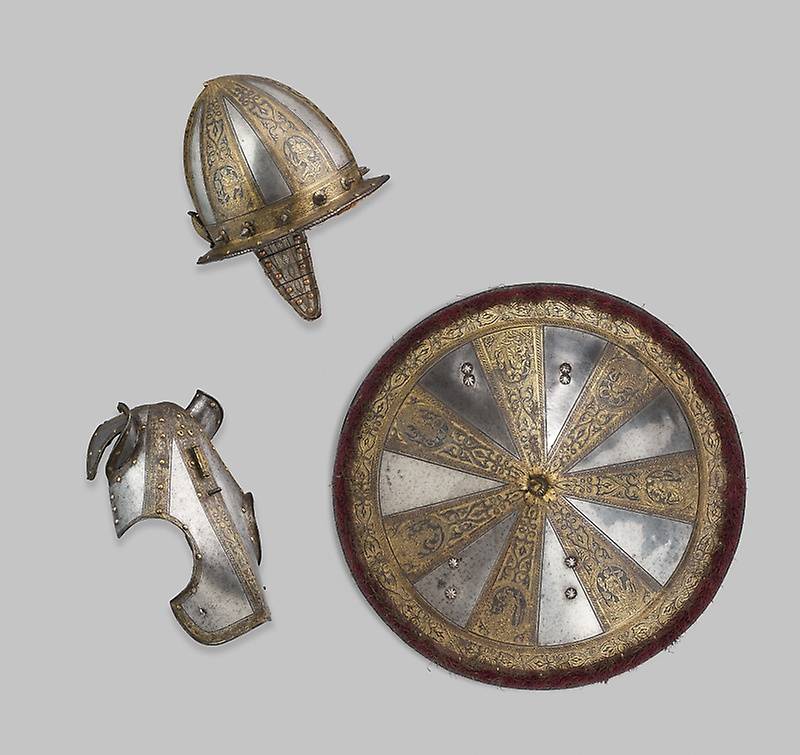
12. Equestrian 1570 - 1580 Milan. Steel, gilding, bronze, leather. Shield - rondash, diameter 55,9 cm; horse shaffron, cabinets (weight 2400 g.). (Chicago Institute of the Arts)
It should be considered that the Morion cabasset was more often used by riders than by infantrymen, because they fought with knives with which a backhand could strike a high crest and even knock it to the side. And then in cavalry they always preferred to use more compact helmets, such as, for example, burginottes.
13. Parade armor: shield and helmet morion. (Dresden Armory)
14. Parade armor: shield and helmet of a kabassset. (Dresden Armory)
Finally, in addition to this hybrid, the cabaret helmet is also known, resembling a bottle calabash gourd, from which it most likely got its name. Cabasset, or "Birnhelm", that is, in German "helmet-pear", along with Morion, became widespread in Germany.
The cabset was usually the helmet of an infantryman, both spearmen, pikemen, and archerbusier riflemen. For the latter, he was the only defense, because, because of his rather heavy equipment and weapons, they could not even afford armor. As for the musketeers, who, instead of a more or less light arquebus, a heavy musket appeared on the armament, a forket-stand was a support when firing, and a sling with cartridges, they quickly refused even cabinets, and wore wide-brimmed hats. The fact is that neither musketeers nor arquebusiers were afraid of cavalry attacks, as in the case of a cavalry attack they could always escape from her under the cover of pikiners.
15. Cheap soldier Morion. Note that the left one is made of two full-stamped halves fastened along the ridge. (Museum Meissen)
16. Very rough, but originally arranged Morion with opening headphones. (Dresden Armory)
Cabasset at the end of the XVI century. they began to produce in large numbers by the factory method, and he soon lost his best protective qualities. Having lost his ribs, and then his elongated dome shape, he turned into the very “household utensils” that he was most like, like a pot, that is, “sweat”.
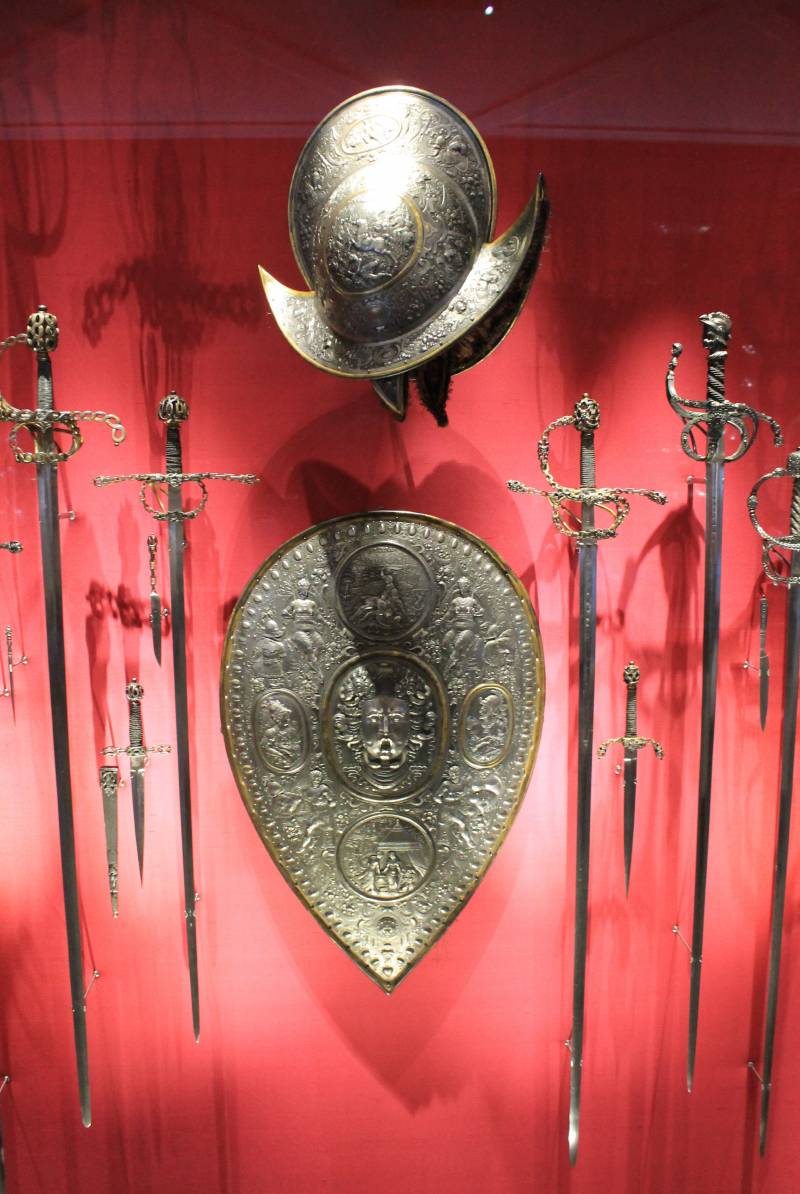
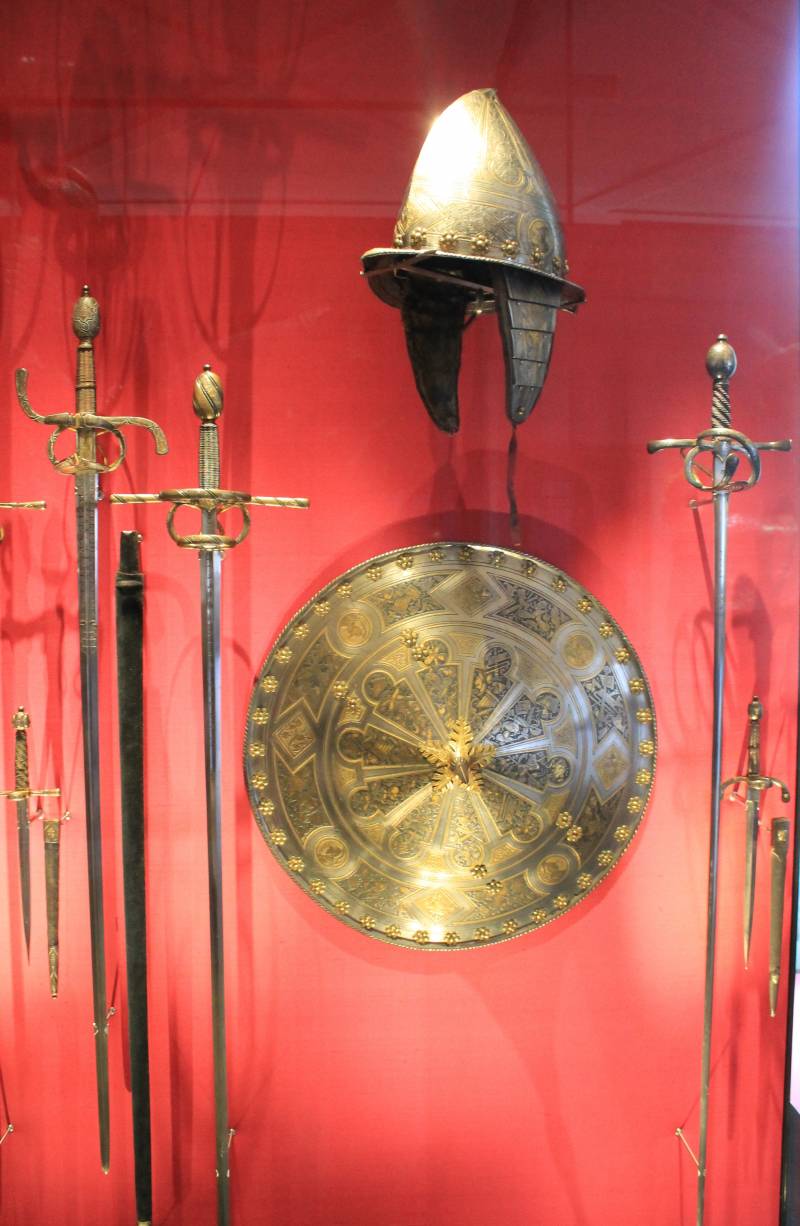
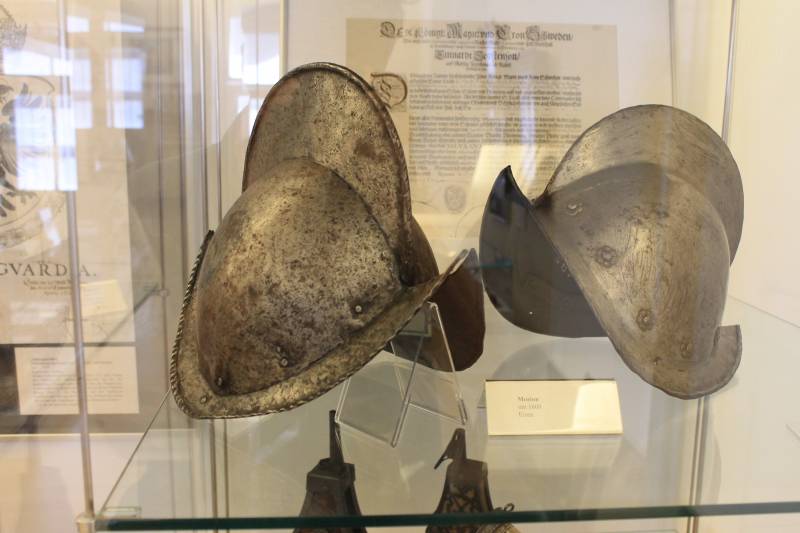
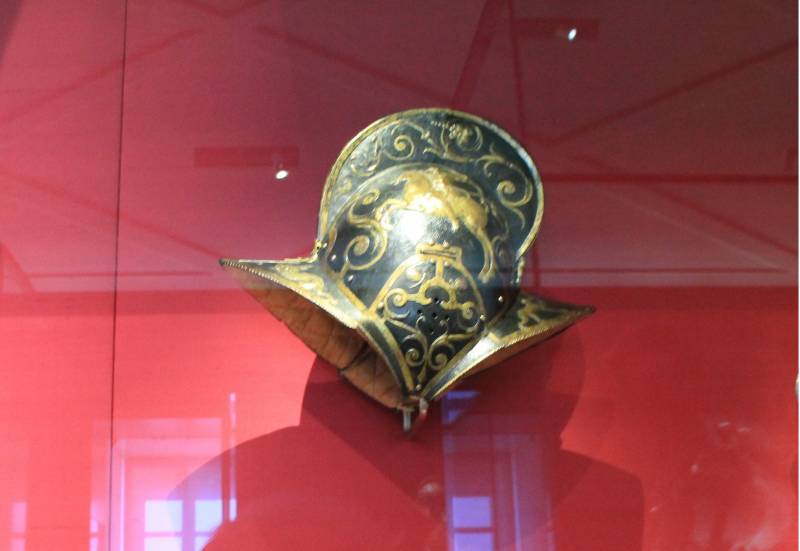
Information